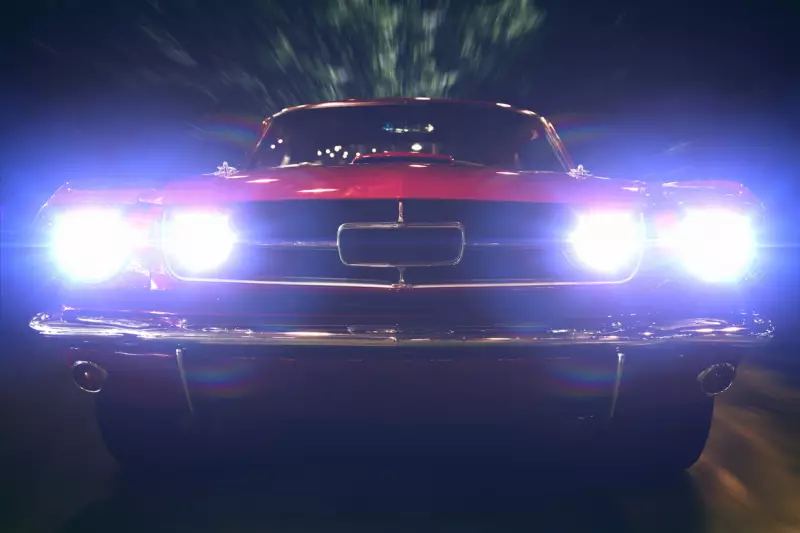Driving at night can be a daunting task. Low visibility, glare from oncoming traffic, and the occasional animal crossing your path are all considerations you must take into account when driving after sunset. One way to make things easier on yourself is by understanding how to use the low-beam and high-beam headlights on your vehicle.

Introduction to Low Beam and High Beam Lights
We all know that there are two types of car headlights – low beams and high beams. But what's the difference between the two, and when should each be used?
Low beam headlights provide a less intense light and are meant for use in well-lit areas, such as city streets. They should not be used on highways, as they can temporarily blind oncoming traffic.
High-beam headlights provide much brighter light and are meant for use in darker conditions, such as on country roads with little to no street lighting. However, they should not be used in areas where there is oncoming traffic, as they can cause an extreme glare that can lead to accidents.
The Difference Between Low Beam and High Beam
When it comes to using your headlights, there are two different options: low beam and high beam. So, what's the difference between a high beam and a low beam, and when should each be used?
Low-beam headlights are made to light up the road in front of you without blinding oncoming traffic. This is the setting you should use most of the time, except for when you're on a deserted road with no other cars around.
High beam headlights are much brighter than low beams and are meant for when you need to see further ahead, like when driving on a dark, unlit road. High beam headlights must not be used when another car comes towards you, as they can be quite blinding to oncoming traffic.
How Using The Wrong Kind Of Light Beam Can Impact Other Drivers
It is very important to use the correct kind of light beam when driving at night. If you use the wrong kind of light beam, it can impact other drivers. Here are some things to keep in mind when choosing which light beam to use:
You should use your high beams if you are driving on a dark road with no oncoming traffic. High beams provide a narrow, focused light to help you see the road and any potential hazards.
Switch to low beams when there is oncoming traffic. Low beams provide a wide, diffused light that will not blind oncoming drivers. Once you have passed the oncoming vehicle, you can switch back to your low beams.
It is also important to remember to dim your lights when driving through areas with streetlights or when approaching another car from behind – using high beams in these situations can be dazzling and cause an accident.
When Should I Use Low Beams?
It's important to use your low beams when there is oncoming traffic and when driving in fog or other poor visibility conditions. You should also use your low beams when you are following another car so that you don't blind the driver with your high beams.
When Should I Use High Beams?

When you are driving around at night or in other low-light conditions, it is really important that you can see the road ahead as completely as possible. Using high beams provides a wider and brighter field of view than low beams but can also temporarily blind oncoming traffic. For this reason, high beams should only be used when there is no oncoming traffic and when you need extra light to see the road ahead clearly.
Benefits of Using the Correct Light Settings
When it comes to using your low-beam or high-beam headlights, it's important to know when to use each one. Using the incorrect setting can result in decreased visibility and can be extremely dangerous.
Here are some guidelines to help you understand when to use low beam vs high beam:
- In general, you should use your low beams whenever you encounter oncoming traffic, as well as when following another vehicle. High beams should be used only when there is no oncoming traffic, and you have a clear view of the road ahead.
- If you find yourself in a situation where there is oncoming traffic, and you need to use your high beams, you can briefly flash your headlights before switching back to your low beams. This will let the other driver know that you're coming and give them time to adjust their headlights.
- Whenever possible, avoid using your high beams in urban areas as they can be blinding for other drivers and pedestrians. If you must use them, be sure to dim them whenever an oncoming car or pedestrian is present.
Tips for Using Low-Beam & High-Beam Lights
When driving at night or in bad weather, it's important to know when to use your low and high-beam headlights. Low-beam headlights provide a wider, more diffused light that won't blind oncoming traffic, and high beams provide a narrower, more concentrated light that can help you see further down the road. Here are some tips for using low and high-beam headlights:
- When driving at night, always use your low beams. High beams can be used when there is no oncoming traffic but should be dimmed as soon as another car is spotted.
- In foggy or rainy conditions, use your low beams. The diffused light will help you see better, while the high beams can reflect off the water and make it harder to see.
- If you find yourself in a situation where you can't see far ahead of you, such as in a tunnel or during a heavy snowstorm, use your high beams. The extra light will help you see potential hazards in time to avoid them.
Now You Know!
Knowing when and how to use low beams and when to use high beams is essential for any driver. Low beams provide increased visibility in low-light conditions, making them a great choice during the night or in areas with limited street lighting. High beams should be used when traveling on open roads or highways with few other drivers around you.
Always remember to turn off your headlights when not necessary, as leaving them on can be dangerous for you and the other drivers traveling alongside you. So next time you get behind the wheel, GoodCar wants to ensure that you know exactly how and why you should use each type of headlight!








![Best Sites to Check a Car’s History [2025 Review]](https://media.infopay.net/thumbnails/K8lMeG2QLjE46LPqZlmoi6SunKKdT5qvlaRZk6e1.webp)










![Best Sites to Check a Car’s History [2025 Review]](https://media.infopay.net/thumbnails/K8lMeG2QLjE46LPqZlmoi6SunKKdT5qvlaRZk6e1-w356.webp)
